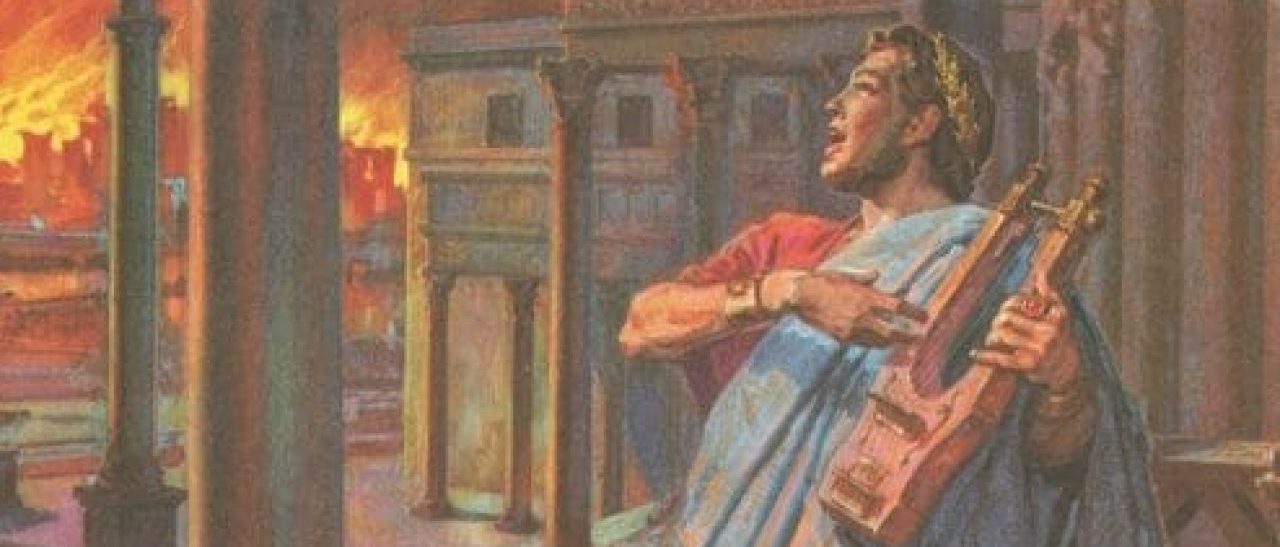Emperor Nero
Posted on 26th December 2020
Born Lucius Domitius Ahenobarbus on 15 December 37AD; the last emperor of the ‘Julio-Claudian Dynasty. He had many names during his life, but we will use the name that he is most known by ‘Nero’. When Nero was only three years old, with his father having already died, his mother Agrippina the Younger was banished from Rome by the then emperor Caligula, and Nero was sent to live with an aunt.
Following Caligula’s murder, Claudius became emperor. At this time Nero was reunited with his mother.
Nero was never expected to be emperor, but Agrippina was a very ambitious and scheming woman, who craved power for herself; she believed that she could rule alongside her son.
Agrippina married emperor Claudius, becoming his fourth wife, when Nero was only thirteen years old. Shortly after the marriage she had manipulated Claudius into adopting Nero as his son and heir, even against his own son Britannicus. Nero was appointed pro-consul in 51AD at the age of fourteen; he was to appear publicly alongside Claudius also addressing the senate.
Nero married his stepsister Claudia Octavia (Claudius’ daughter by his third wife) when he turned sixteen in 53AD.
Emperor 54AD – 68AD
Problems occurred early in Nero’s reign due to the influence of Agrippina; his advisers were unhappy with her interference and his friends advised him to beware of his mother.
Over time Agrippina fell out of favour with her son and she started to push for Claudius’ own son Britannicus to be emperor, but he died suddenly on 12 February 55AD; It is believed that Nero arranged for him to be poisoned, even though he stated that Britannicus had died of an epileptic fit.
Nero removed Agrippina from the palace, and then plotted her death. He tried to kill her with a device that would fall from her bedroom ceiling and crush her while she slept, but this failed. Then he had a boat made that would fall apart in the water as she would drown, this worked but his mother managed to swim ashore. Finally, he decided to have her stabbed to death, but this decision was to haunt him for the rest of his life.
Following Agrippina’s death, Nero was finally free from her interference and influence; he could now concentrate on his passions. He arranged chariot races and athletics competitions, competing in both. He acted in tragedies, sang, and played the lyre (stringed instrument/small harp). He encouraged the upper classes to also sing and perform in musical plays.
Nero, although happy indulging in his passions, was not happy in his marriage to Octavia, wishing instead to marry his lover Poppaea. Octavia was well liked by the people, and the decision to divorce her made Nero unpopular. To be rid of Octavia, Nero accused her of adultery and exiled her; she later died, stated as suicide but believed murdered on the orders of Nero.
Nero married Poppaea in 62BC, but it was not a happy marriage. Their first child died shortly after birth, and it is believed that Nero kicked Poppaea to death while she was pregnant with their second child in 65BC.
Those closest to Nero became worried by his bizarre behaviour and his paranoia; he was suspicious of everyone. He arranged for hundreds of people to be murdered, many for just looking at him; he also forced senators to kill themselves. He was now believed to be a madman.
Nero’s acting and singing performances increased and he insisted that all must stay until they were over; to have left before the end of his performance was paramount to a death sentence, and men would fake their own deaths just to be taken away.
In 64AD Nero gave his first public performance, all previous ones having being in private. This was a bad omen; actors were not thought highly of and an emperor acting caused outrage among the people.
A great fire in 64AD devastated two thirds of the city of Rome. The people blamed Nero for the fire, however he blamed the Christians and persecuted them heavily for this.
Nero started a huge rebuild of the city including a new palace (Domus Aurea); had this palace been finished it would have covered two thirds of Rome. A statue of Nero, thirty metres tall was erected at the entrance and the walls and ceilings were inlaid with gemstones. Nero’s excesses knew no bounds, but his popularity was diminishing in the senate, with many plotting and rebelling against him.
Nero awoke one night to find no guards and the palace deserted. He called ‘Have I no friend or foe’, but nobody answered. Nero, knowing that he had been abandoned fled the city; he committed suicide on 6 June 68AD, saying shortly before his death ‘Oh what an artist dies in me’.
Tagged as: Junior Ancient Rome
Share this post:





